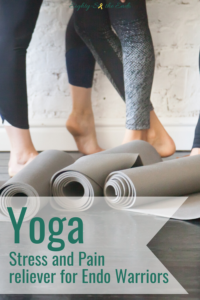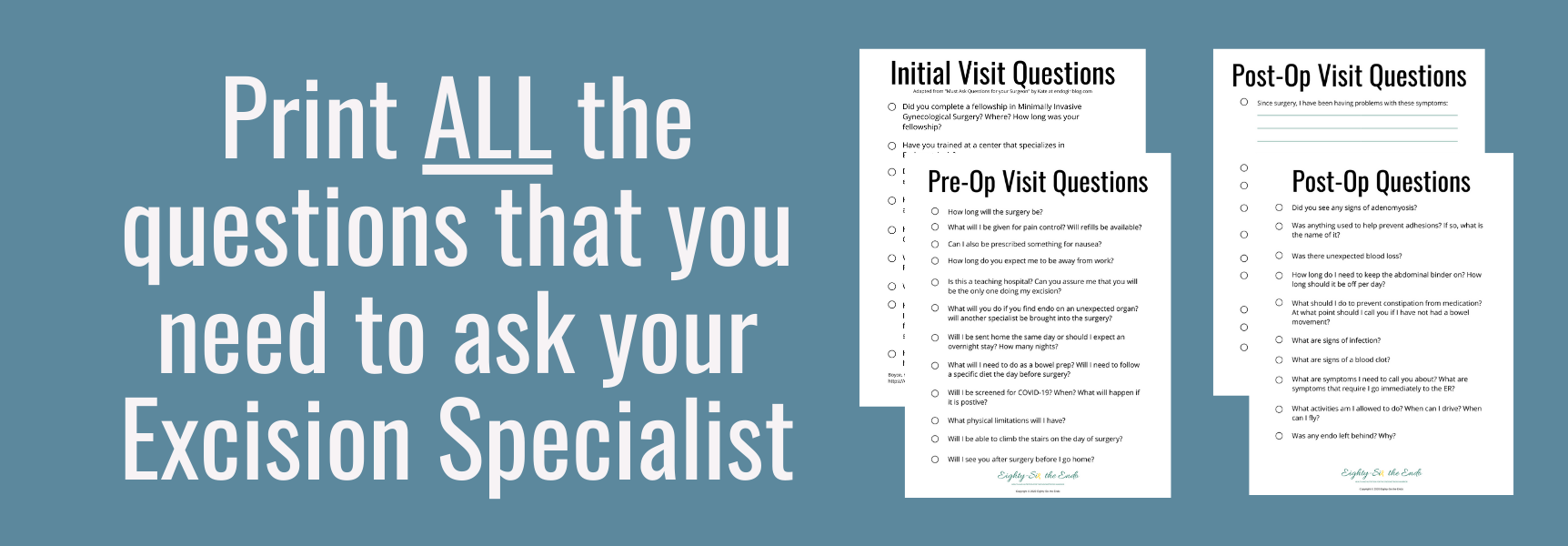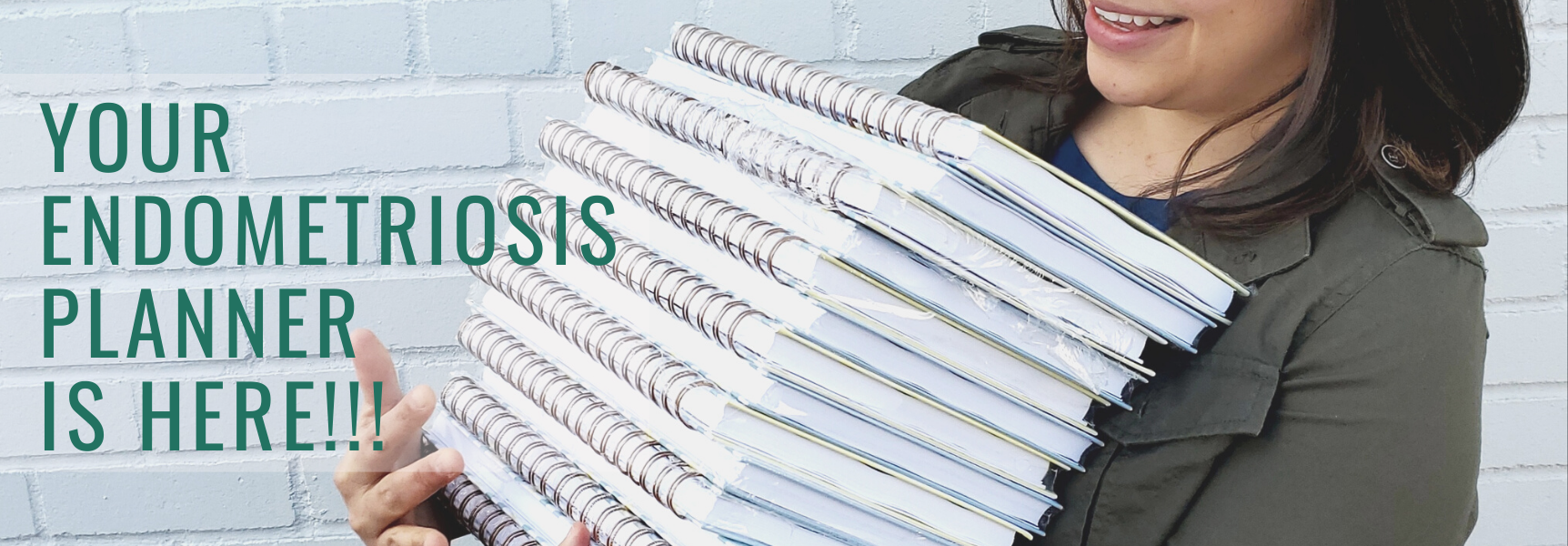Endometriosis- a diagnosis that causes stress and also worsens with stress. With that in mind, it almost seems as though we will never win this battle against endometriosis. However, even though we have yet to achieve a “cure,” women with endometriosis can make lifestyle changes that will decrease estrogen dominance. This, in turn, will decrease disease progression and symptoms.
In this 5-part series, I am focusing on ways to reduce estrogen dominance. Even more so, I am focusing on practical ways to help endo warriors gain control of their bodies! Because the fact is, you are stronger than you know. You have the ability to educate yourself and implement change that will give you a better quality of life.
But how will a focus on Estrogen Dominance help you gain a better quality of life? As explained in Part 1 of this series, one thing researchers are sure of is that endometriosis is an estrogen-dependent disease. And, unfortunately, stress can play a huge role in how our body responds to hormones.
In this post I will provide you with tangible and practical steps you can take to help reduce your overall stress.

Why Stress Plays A Role
Stress is known to be a cause for many poor health outcomes. It can also cause any chronic disease to worsen, which results in other chronic problems. This is no different when discussing endometriosis.
For many, it almost seems obvious that stress can worsen endometriosis symptoms. Many Endo Warriors feel the consequences of stress every day. For me, my endometriosis symptoms always flare up after an especially stressful day at work.
But even despite what we feel, scientists know that the severity of endometriosis has been linked to high amounts of oxidative stress in the body. Not to get too technical, but- oxidative stress can promote the growth of endometriosis adhesions and lead to worsening endometriosis and infertility (1).
Stress has also been known to cause an increase in estrogen dominance. When the body is under high stress, it uses progesterone to make cortisol (6). This can lead to a decrease in progesterone, resulting in estrogen dominance.
Lastly, many know that weight gain is a common side effect of chronic stress. And as we discussed in part one of this series, estrogen likes to accumulate in the fat deposits of the body. So, along with maintaining a healthy weight, it is important that you learn to cope with stress and make reducing your stress a top priority.
Tangible Steps for Long Term Stress Relief
Go To Bed!
Can you hear your parents yelling at you? As much as we fought them as teenagers, there was a method to their madness. It’s not madness at all actually. It’s pure science. Poor sleep is recognized as a serious health problem and a stressor in and of itself (4).

Poor sleep hygiene is associated with decreased cognitive functioning, decreased mood, poor performance, and increased stress. Unfortunately, for many Endo Warriors insomnia is a byproduct of their pain. Like I mentioned earlier, it almost seems as though we can never win.
However, there are multiple ways you can improve your sleep cycle. Here are just a few:
Set A Bed Time and Stick to It!
Be sure to go to bed at least 7-8 hours before you have to wake up. This will be hard at first, but over time your body will adjust and reap the benefits. You may find some people recommending a minimum of 6 hours of sleep, but realistically, when you have a chronic inflammatory condition, your body will thrive when it has longer periods of quality sleep.
Start an Exercise Routine.
“Physical inactivity has been associated with reduced self-reported hours of sleep and increased risk of clinically diagnosed insomnia” (4). This statement by itself can give you some insight as to why so many Endo Warriors suffer from insomnia. With chronic and debilitating pain comes physical inactivity.
Understandably, we spend so many of our days on the couch from fatigue and chronic pain. But on days when the pain is minimal, it is vital that you get up and move!

Move your body and allow it to become tired. Go for a walk, do some yoga, or go swimming. All of these are low impact, yet still provide benefits to your body and allow for a restful night of sleep.
Eighty-Six the Alcohol and Caffeine
If you haven’t already given up alcohol or caffeine while trying to follow an anti-inflammatory diet, then now is your chance! Alcohol and caffeine are both known to reduce the quality of sleep you can achieve.
Alcohol, specifically, may cause drowsiness, but once it is metabolized it decreases non-REM sleep (4); which involves a stage of sleep that is needed to enhance the immune system and repair tissues.
Pick Up a Hobby.
Part of reducing stress is finding effective ways to release and cope with your stress. Lucky for you, it also means that you get to pick a hobby that excites a passion within you!
Finding a creative outlet or activity that allows you to release stress can be so beneficial to your overall mental health; which eventually will positively impact your physical well-being.
Some hobbies you might consider:
- Writing/journaling/poetry
- Drawing/painting/coloring
- Playing an instrument/Singing
- Videography/photography
- Cooking/baking
- Building/Refurnishing/DIY-ing

Practice Mindfulness Meditation
Studies show that the brain actually goes through physical changes when mindfulness becomes a part of your everyday life (7). Ultimately, the studies noted decreases in anxiety, depression, stress, pain, and memory loss.
Although it takes practice and patience, mindfulness meditation has been shown to “reduce presleep arousal and worry” (4). Which takes us back to our initial goal to help you get better sleep.
If you need help getting started, there are countless free mobile apps and YouTube videos that can help guide you through your practice.
Consider Aromatherapy
There is undoubtedly a shift happening in our healthcare system today. Although it is gradual, there are many clinicians and patients who are turning to alternative medicine for healing. One popular modality is the use of essential oils.
Essential oils have been around for many years and have proven to be effective in many cases. When it comes to stress relief, “essential oils such as lavendar, lavandin, mandarin, rose, bergamot, and frankincense have all shown their potential to reduce stress” (3).
Yes, you can use them topically, but in this case, it can be beneficial to diffuse essential oils into your environment for aromatherapy purposes.
Practical Steps for Immediate Stress Relief
All these tips provided are great for long term benefits. But what about the times when you are in a state of extreme stress and can anticipate an anxiety attack about to happen? In this case, I recommend you S.T.O.P!

S- Step away
If it is safe to do so, step away from the stressful situation.
T- Tune into Emotions
What are you feeling? What brought this on?
O- Oxygen (Breathe)
Take long, slow, and deep breaths. You should feel your breath fill your stomach, rather than fill your chest (so to speak). Use your diaphragm to deepen the breath. Deep breathing with the diaphragm helps the autonomic nervous system decrease the heart rate.
P- Plan
Find purpose in your situation and make a plan. What can you do to alleviate the stress? Who can help you? How will you be able to pull through?
Estrogen Dominance: A Series
As you can see, there is so much you can do to help alleviate the stress you may be experiencing. By putting these steps into practice, you may find that your endometriosis symptoms start to improve and/or deteriorate.
So, even though the cure for endometriosis has yet to be found, I encourage you to take charge of the things you can control. Take charge of your health and continue to educate yourself!
If you are looking for more information on how to decrease your estrogen burden, check out Part 1 of this series. Here I talk about how focusing on your diet should be one of the first steps you take.

Note: This post is adapted from the original post I wrote for the American End of Endo Project.

- Amreen, S., Gupta, P., Kumar, P., & Rao, P. (2019). Evaluation of Oxidative Stress and Severity of Endometriosis. Journal of Human Reproductive Sciences, 12(1), 40-46. doi: 10.4103/jhrs.JHRS_27_17
- Cho, Y. J., Kim, H.Y. (2018). Oxidative stress and endometriosis. Kosin Medical Journal, 33(2), 135-140. https://doi.org/10.7180/kmj.2018.33.2.135
- Buckle, J. (2015). Aromatherapy for Stress in Patients and Hospital Staff. Alternative and Complimentary Therapies, 21(5), 210-213. https://doi.org/10.1089/act.2015.29016.jbu
- Avery, J. C., Davies, M. J., Fernandez, R. C., March, W. A., McEvoy, R. D., Moore, V. M., . . . Varcoe, T. J. (2018). Sleep disturbances in women with polycystic ovary syndrome: prevalence, pathophysiology, impact and management strategies. Nature and Science of Sleep, 10, 45-64. http://dx.doi.org/10.2147/NSS.S127475
- O’Rourke, D., Russo, M. A., Santarelli, D. M. (2017). The physiological effects of slow breathing in the healthy human. Breathe, 13(4), 298-309. doi:10.1183/20734735.00981
- BodyLogicMD (n.d). Bioidentical Hormones: Progesterone. Retrieved from https://www.bodylogicmd.com/hormones-for-women/progesterone
- Holzel, B. K., Posner, M.I., Tang, Y. (2015). The neuroscience of mindfulness meditation. Nature Reviews Neuroscience, 16, 213–225. https://www.nature.com/articles/nrn3916



